
The Bowery Boys: New York City History
Tom Meyers, Greg Young


14 Listeners
All episodes
Best episodes
Top 10 The Bowery Boys: New York City History Episodes
Goodpods has curated a list of the 10 best The Bowery Boys: New York City History episodes, ranked by the number of listens and likes each episode have garnered from our listeners. If you are listening to The Bowery Boys: New York City History for the first time, there's no better place to start than with one of these standout episodes. If you are a fan of the show, vote for your favorite The Bowery Boys: New York City History episode by adding your comments to the episode page.
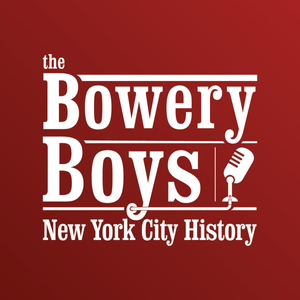
#367 The Ice Craze: How the Ice Business Transformed New York
The Bowery Boys: New York City History
07/16/21 • 54 min
New York City on ice — a tribute to the forgotten industry which kept the city cool in the age before refrigeration and air conditioning.
Believe it or not, ice used to be big business.
In 1806 a Boston entrepreneur named Frederic Tudor cut blocks of ice from a pond on his family farm and shipped it to Martinique, a Caribbean county very unfamiliar with frozen water. He was roundly mocked — why would people want ice in areas where they can’t store it? — but the thirst for the frozen luxury soon caught on, especially in southern United States.
New Yorkers really caught the ice craze in the 1830s thanks to an exceptionally clear lake near Nyack. Within two decades, shops and restaurants regularly ordered ice to serve and preserve foods. And with the invention of the icebox, people could even begin buying it up for home use.
The ice business was so successful that — like oil and coal — it became a monopoly. Charles W. Morse and his American Ice Company controlled most of the ice in the northeast United States by the start of the 20th century.
He was known as the Ice King. And he had one surprising secret friend — the Mayor of New York City Robert A. Van Wyck.
PLUS: The 19th century technologies that allowed American to harvest and store ice. The Iceman cometh!


4 Listeners
1 Comment
1
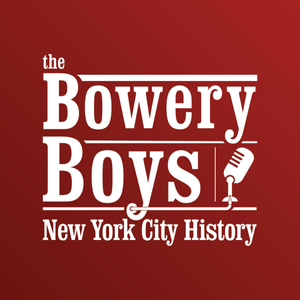
#371 A Visit to Little Syria: An Immigrant Story
The Bowery Boys: New York City History
09/10/21 • 61 min
Just south of the World Trade Center district sits the location of a forgotten Manhattan immigrant community. Curious outsiders called it "Little Syria" although the residents themselves would have known it as the Syrian Colony.
Starting in the 1880s people from the Middle East began arriving at New York's immigrant processing station -- immigrants from Greater Syria which at that time was a part of the Ottoman Empire.
The Syrians of Old New York were mostly Christians who brought their trades, culture and cuisine to the streets of lower Manhattan. And many headed over to Atlantic Avenue in Brooklyn as well, creating another district for Middle Eastern American culture which would outlast the older Manhattan area.
Who were these Syrian immigrants who made their home here in New York? Why did they arrive? What were their lives like? And although Little Syria truly is long gone, what buildings remain of this extraordinary district?
PLUS: A visit to Sahadi's, a fine food shop that anchors today's remaining Middle Eastern scene in Brooklyn. Greg and Tom head to their warehouse in Sunset Park to get some insight on the shop's historic connections to the first Syrian immigrants.
Join the Bowery Boys Podcast on Patreon for extra audio features, access to cool merchandise and early access to tickets for live events.
Please consider writing a review of our podcast on Apple Podcasts. Brand new reviews are useful in getting the show more visibility. We greatly appreciate it.

2 Listeners

#316 Jenny Lind at Castle Garden
The Bowery Boys: New York City History
04/03/20 • 47 min
EPISODE 316 What happens when P. T. Barnum, America's savviest supplier of both humbug and hoax, decides it's time to go legit? Only one of the greatest concert tours in American history.
If you've seen the film musical The Greatest Showman, you've been introduced to Jenny Lind, the opera superstar dubbed "The Swedish Nightingale". And you also know that Barnum, taken with the Swedish songstress, brings her to New York to begin a heavily promoted American debut.
But the film sidesteps many of the more fascinating details. Lind was greeted like a queen and rock star when she arrived at the Canal Street dock despite most New Yorkers having never heard her sing.
Her stage was Castle Garden, the former fort turned performance venue that sat in New York harbor, connected to the Battery by a small bridge.
The concert proved legendary. And Lind proved herself an enterprising businesswoman, bending even the will of a profiteer like Barnum. Her financial arrangement for the tour would influence 170 years of musical performances and cement her reputation as one of the greatest vocalists of the 19th century.


2 Listeners

#414 The Brooklyn Navy Yard and Vinegar Hill
The Bowery Boys: New York City History
08/04/23 • 59 min
The tale of the Brooklyn Navy Yard is one of New York's true epic adventures, mirroring the course of American history via the ships manufactured here and the people employed to make them.
The Navy Yard's origins within Wallabout Bay tie it to the birth of the United States itself, the spot where thousands of men and women were kept in prison ships during the Revolutionary War.
Within this bay where thousands of American patriots died would rise one of this country’s largest naval yards. It was built for the service and protection of the very country those men and women died for. A complex that would then create weapons of war for other battles -- and jobs for hundreds of thousands of New Yorkers.
In this episode, Greg is joined by the amazing Andrew Gustafson from Turnstile Tours who unfurls the surprising history of the Navy Yard -- through war and peace, through new technologies and aging infrastructure, through the lives of the men and women who built the yard's reputation.
And the story extends to the tiny neighborhood of Vinegar Hill, famed for its early 19th-century architecture and the mysterious mansion known as the Commandant's House.
FEATURING the origin story of Brooklyn's most sacred public monument -- at home not in Vinegar Hill (at least not anymore) but in Fort Greene.
Visit our website for more information and also head to Turnstile Tours for information on their tours of the Navy Yard.
2 Listeners
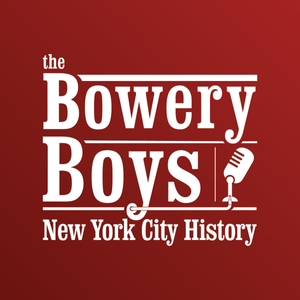
#370 Tragic Muse: The Life of Audrey Munson
The Bowery Boys: New York City History
08/27/21 • 39 min
By the time Audrey Munson turned 25 years old, she had became a muse for some of the most famous artists in America, the busiest artist’s model of her day,
She was such a fixture of the Greenwich Village art world in the early 20th century that she was called the Venus of Washington Square, although by 1913 the press had given her a grander nickname — Miss Manhattan.
Her face and figure adorned public sculpture and museum masterpieces. And they do to this day.
But just a few years after working with these great artists, Audrey Munson disappeared from the New York art world, caught up in a murder scandal that would unfairly ruin her reputation.
And on her 40th birthday she would be locked away forever.
Join the Bowery Boys Podcast on Patreon for extra audio features, access to cool merchandise and early access to tickets for live events.
Please consider writing a review of our podcast on Apple Podcasts. Brand new reviews are useful in getting the show more visibility. We greatly appreciate it.

1 Listener
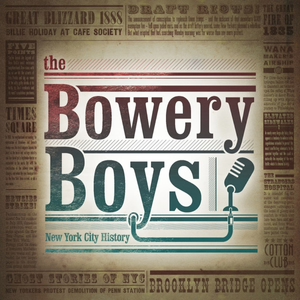
#222 Who Killed Helen Jewett? A Mystery By Gaslight
The Bowery Boys: New York City History
02/16/17 • 48 min
In the spring of 1836, a young woman named Helen Jewett was brutally murdered with a hatchet in a townhouse on Thomas Street, just a few blocks northwest from City Hall.
This was not a normal crime. Helen was a prostitute of great beauty and considerable intelligence, making her living in a rapidly transforming city.
Among her client list were presentable gentlemen and rowdy young men alike -- their kind fueling the rise of illicit pleasures throughout New York City in the 1830s.
This was the era of the sporting man. Young single men with a little change in their pocket hit the streets of New York after dark, looking for a good time. For some single young women struggling to survive, the sex industry -- from the 'high end' brothels to the grimy upper tiers of the theater -- allowed them to live comfortable, if secretive, lives.
But it placed many in great danger. The prime suspect for Helen's murder was a young Connecticut man who worked at a respectable New York firm. His trial would captivate New Yorkers and even interest newspaper readers around the country. But would justice be served?
ALSO: Find out how this incident helped shape the nature of American journalism itself. PLUS: Meet more than one person named Ogden!
www.boweryboyshistory.com
1 Listener

#412 The New York Parking Wars
The Bowery Boys: New York City History
06/23/23 • 65 min
Take a look at a historic photograph of New York from the 1930s and you'll see automats, newsies, elevated trains and men in fedoras. What you won't see -- dozens and dozens of automobiles on the curb.
In a city with skyrocketing real estate values, why are most city streets still devoted to free car storage? It's a situation we're all so used to that we don't think twice about it. Whatever happened to the curb?
Long-term and overnight parking used to be illegal in the early 20th century. The transition from horse-drawn carriages to gas-powered automobiles transformed neighborhoods like Times Square and reconfigured everyday life on the street. But before the 1920s, parking those glamorous new Model Ts on the street was tolerated only in short-term situations.
By the 1940s, however, New Yorkers were simply too reliant on the automobile, and the city's parking lots and garages were simply not adequate. (For many New Yorkers, like Seinfeld's George Costanza, they're still not acceptable).
Street parking was de facto legalized with the advent of alternate-side parking rules, and soon parking meters and 'meter maids' were attempting to keep a handle on the chaotic situation.
Eventually the car took over. Will it always be this way?
In this special episode, Tom and Greg are joined by Slate Magazine writer Henry Grabar, author of Paved Paradise: How Parking Explains The World, who exposes some shocking parking violations and even offers a few couple solutions for the future.
1 Listener
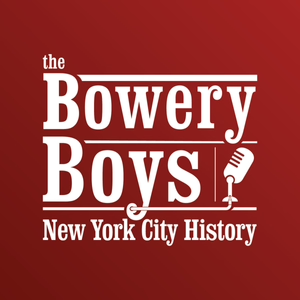
#290 Bagels: A New York Story
The Bowery Boys: New York City History
05/16/19 • 59 min
EPISODE 290: The most iconic New York City foods -- bagels, pizza, hot dogs -- are portable, adaptable and closely associated with the city's history through its immigrant communities.
In the case of the bagel, that story takes us to the Polish immigrants who brought their religion, language and eating customs to the Lower East Side starting in the 1870s. During the late 19th century, millions of bagels were created in tiny bake shops along Hester and Rivington Streets, specifically for the neighborhood's Jewish community.
We start there and end up in the modern day with frozen supermarket bagels, pizza bagels, bagel breakfast sandwiches, bagel bites. BAGELS SLICED ST. LOUIS STYLE?! How did this simple food from 17th century Poland become a beloved American breakfast staples?
It starts with a bagel revolution! Poor conditions in the bakeries inspired a worker's movement and the formation of a union that standardized the ways in which bagels were made. By the mid 20th century, modern technology allowed for bagels to be made cheaply and shipped all over the world.
But the 'real' way to make a bagel is to hand roll it. In this episode, we speak to Melanie Frost of Ess-a-Bagel for some insight into the pleasures of the true New York City bagel.
boweryboyshistory.com
1 Listener

#421 Evacuation Day: Forgotten Holiday of the American Revolution
The Bowery Boys: New York City History
11/22/23 • 64 min
For decades New Yorkers celebrated Evacuation Day every November 25, a holiday marking the 1783 departure of British forces from the city they had occupied for several years during the Revolutionary War.
The events of that departure -- that evacuation -- inspired annual celebrations of patriotism, unity, and a bit of rowdiness. Evacuation Day was honored well until the late 19th century. But then, gradually, the party sort of petered out.....
Of course, Americans may know late November for another historically themed holiday – Thanksgiving, a New England-oriented celebration that eventually took the place of Evacuation Day on the American calendar. But we are here to tell you listener – you should celebrate both!
Greg and Tom tell the story of the British's final years in their former colonies, now in victory known as the United States, and their final moments within New York City, their last remaining haven. The city was in shambles and the gradual handover was truly messy.
And then, on November 25, 1783, George Washington rode into town, basically traveling from tavern to tavern on his way down to the newly freed city. The Bowery Boys chart his course (down the Bowery of course) and make note of a few unusual events -- wild parties, angry women with brooms, and one very lucky tailor.
PLUS: Where and how you can celebrate Evacuation Day today.
Other Bowery Boys episodes to check out when you're done with this one:
-- New York City During the Revolutionary War
-- The Revolutionary Tavern of Samuel Fraunces
-- The Great Fire of 1776
-- The Brooklyn Navy Yard and Vinegar Hill
1 Listener
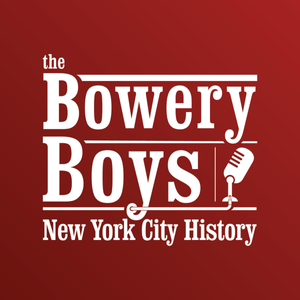
#349 The Queensboro Bridge and the Rise of a Borough
The Bowery Boys: New York City History
01/15/21 • 57 min
“The city seen from the Queensboro Bridge is always the city seen for the first time, in its first wild promise of all the mystery and the beauty in the world.” (F. Scott Fitzgerald, The Great Gatsby)
This is the story of a borough with great potential and the curious brown-tannish cantilever bridge which helped it achieve greatness.
The Queensboro Bridge connects Manhattan with Queens by lifting over the East River and Roosevelt Island, an impressive landmark that changed the fate of the borough enshrined in its curious name.
In 1898, before the Consolidation of 1898, which created Greater New York and the five boroughs, much of Queens was sparsely populated -- a farm haven connected by dusty roads -- with most residents living in a few key towns, villages and one actual city -- Long Island City.
With Brooklyn and Manhattan already well developed (and overcrowded in some sectors) by the early 20th century, developers and civic leader looked to Queens as a new place for expansion. But in 1900 it had no quick and convenient connections to areas off of Long Island.
With the opening of the bridge in 1909, rich new opportunities for Queens awaited. Communities from Astoria to Bayside, Jackson Heights, Flushing and Jamaica all experienced an unprecedented burst of new development.
Thanks in small part to the bridge so famous that it inspired a classic folk song!
1 Listener
Show more best episodes

Show more best episodes
Featured in these lists
FAQ
How many episodes does The Bowery Boys: New York City History have?
The Bowery Boys: New York City History currently has 513 episodes available.
What topics does The Bowery Boys: New York City History cover?
The podcast is about Places & Travel, Society & Culture, History and Podcasts.
What is the most popular episode on The Bowery Boys: New York City History?
The episode title '#367 The Ice Craze: How the Ice Business Transformed New York' is the most popular.
What is the average episode length on The Bowery Boys: New York City History?
The average episode length on The Bowery Boys: New York City History is 49 minutes.
How often are episodes of The Bowery Boys: New York City History released?
Episodes of The Bowery Boys: New York City History are typically released every 13 days, 20 hours.
When was the first episode of The Bowery Boys: New York City History?
The first episode of The Bowery Boys: New York City History was released on Sep 19, 2008.
Show more FAQ

Show more FAQ
